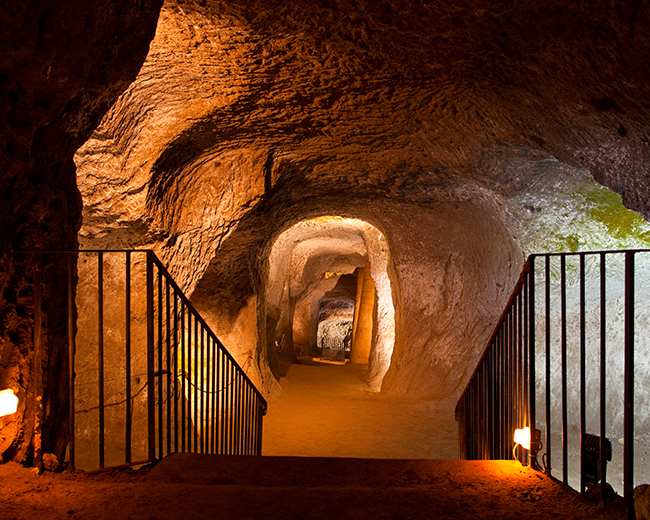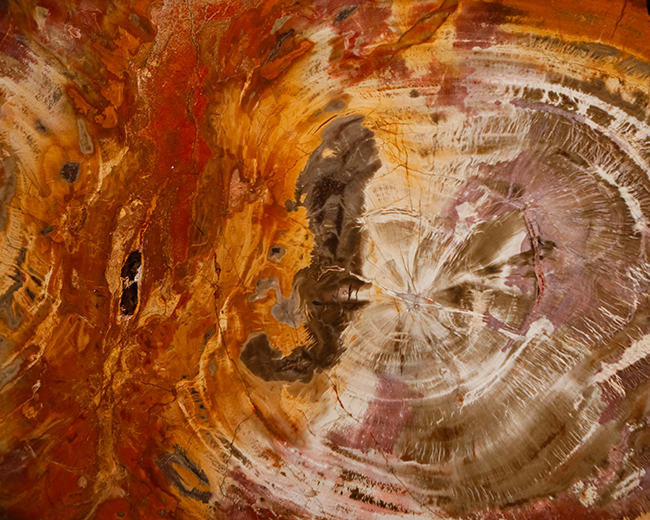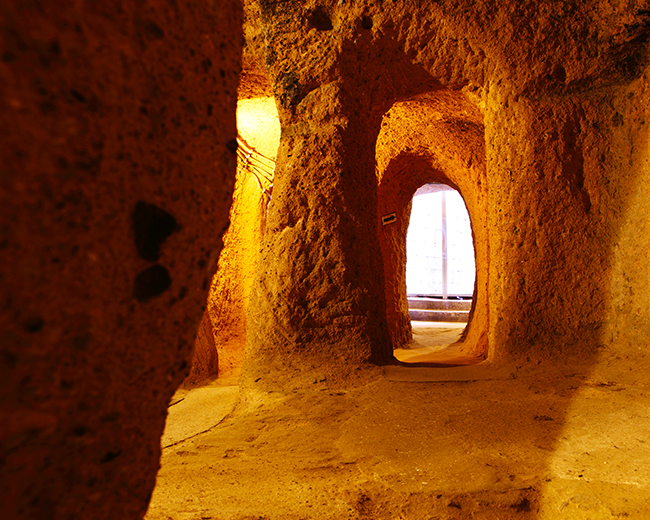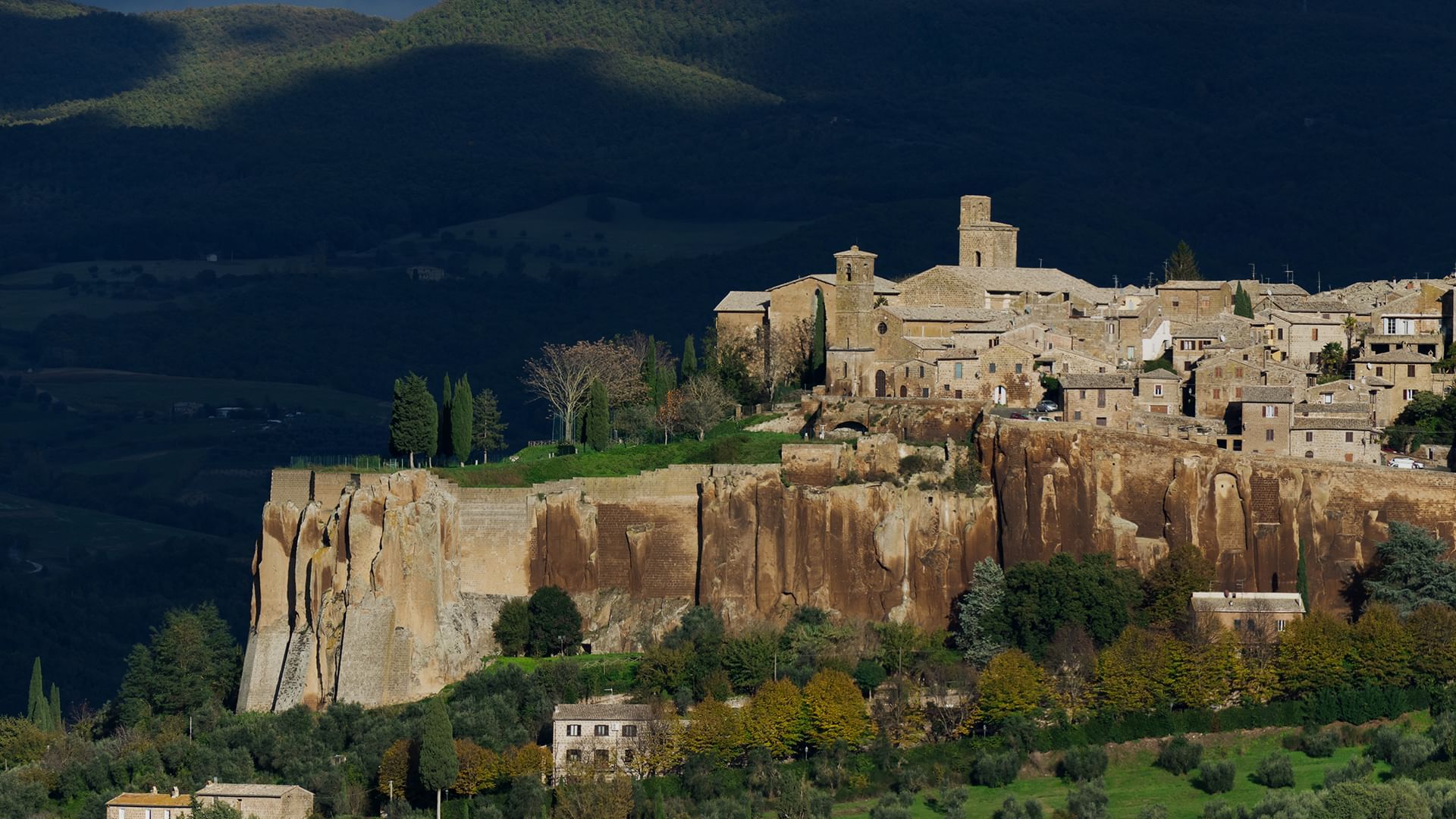Unearthing Unexpected Orvieto through 2500 years of excavations.
21 Feb 2020
Gruppo UNA
Jutting between earth and sky, the city of Orvieto has always had a busy underground life. Over the centuries, the townspeople have entrusted their existence, survival and economy to this hidden realm.
The particular geological nature of the bluff on which the city rises allowed the inhabitants to dig out an incredible number of hollows that stretch, overlap and intersect below the modern urban fabric.
Today, between the dark subsoil and the luminous soaring heights of the Duomo lies a maze of caves hidden in the silent darkness of the bluff.
We have put together a list of not-to-be-missed underground sites. Come with us to enjoy the most exciting!
Orvieto Underground Route.
Our veritable journey back in time starts inside the "Parco delle Grotte". Before entering the dark depths of the earth, turn and take a look at the gentle, sinuous line of the surrounding hills, the varied levels of cultivations on the crags and the stunning silhouette of the olive tree- and cypresses-surrounded ancient Santi Severo e Martirio Abbey.
Along the way, you’ll get the chance to admire the remains of a large oil mill and a whole series of rooms and structures that once belonged to the mill, including tanks, cellars, stables, a fireplace and a water conduit.
Climb down into the cavern through the series of ravines, ladders and narrow tunnels and we come to some marvellous columbariums, cell systems used to nest and breed pigeons for food.
Pozzo di San Patrizio.
This formidable waterworks were originally called the Pozzo della Rocca, because of its proximity to the Albornoz fortress. It later took the name of San Patrizio because in all likelihood in the late eighteenth century it was probably used as a "Purgatory of St. Patrick".
Pope Clement VII commissioned the well to supply water to the city if it ever came under siege. It was completed in 1537 under Paul III Farnese. It is a masterful work of engineering: the cylindrical excavation measurements are a remarkable 54 metres deep by 13 metres in diameter. Even more impressive is the architectural trick of a double helicoidal ramp that allows beasts of burden transporting water never to get in one another’s way in either direction of travel.

Pozzo della Cava.
In your visit to underground Orvieto, don’t miss the Pozzo della Cava route which, in the heart of the medieval quarter, takes you deep into the cliff to caves that are rich in archaeological finds. Plunge all the way back to Etruscan time, through the Middle Ages, the Renaissance and today's modern city, discovering evidence of centuries of daily life.
A fulling mill for wool processing; an Etruscan tunnel for channelling water; an Etruscan earthenware cistern; a typical medieval cellar completely dug out of the tufa rock to produce and preserve Orvieto's famous wine; a tufa pillar, part of the foundations of a medieval tower; and a furnace used by a ceramics workshop during the 14th and 15th centuries.

Fossilized log cave.
The Grotta dei tronchi fossili is an artificial cave of great interest, filled with paleobotanical remains from the ecosystem that preceded the formation of the tufaceous rock on which Orvieto sits, some 350 thousand years ago, well before human presence appeared.
Some of the caves contain cylindrical cavities, some in a vertical position, others slightly inclined, which are either completely hollow or filled with a dark material similar to coal that is and greasy to the touch. This is what remains of trees that once formed a dense forest where the cliff stands today.
Some of these formations still bear traces of growth rings; others feature an imprint of the cortex, perfectly recognizable in the tufa rock.

Hadrian's labyrinth.
The citadel of Orvieto was home to the Etruscan civilization from the 8th century B.C. In 265 B.C, it became an integral part of the Roman state.
Master waterworkers, the Etruscans built wells and cisterns to supply water to homes and shops, and to distribute it to various sacred areas.

Where to stay in Orvieto?
Not far from the A1 Rome-Florence motorway and a few kilometers from Orvieto is Gruppo UNA UNAWAY Hotel Fabro, a hotel that enjoys an excellent location for easily reaching Orvieto. It is a perfect solution for all your travel needs, immersed in the evocative Umbrian landscape.



